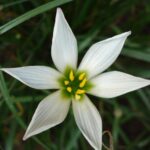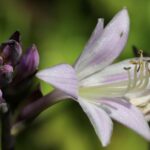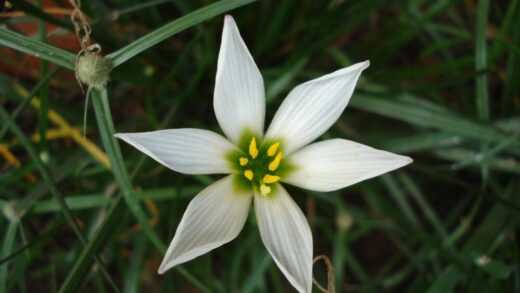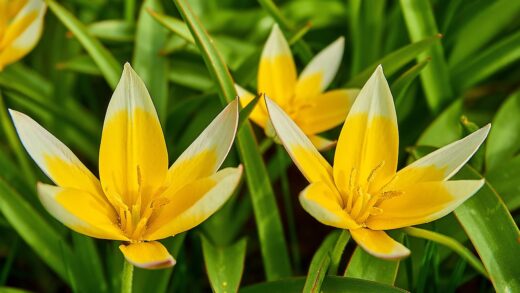The care of the Amazon lily
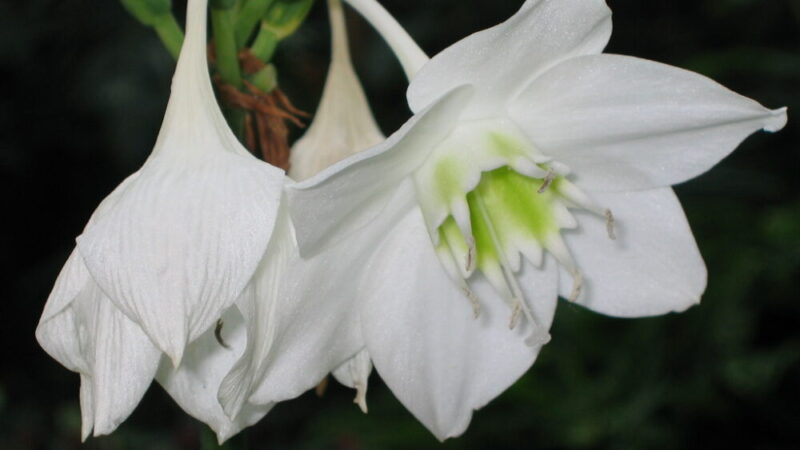
The Amazon lily, a true gem among houseplants, captivates with its elegant, dark green foliage and stunningly fragrant, white blossoms that resemble daffodils. Native to the shaded, humid understory of the rainforests in Colombia and Peru, this plant brings a touch of tropical elegance to any indoor space. Understanding its natural habitat is the key to successfully cultivating it, as recreating these conditions is paramount for its health and prolific flowering. Proper care involves a delicate balance of light, water, and humidity, ensuring the plant not only survives but thrives, rewarding you with its spectacular floral displays. This guide will walk you through the essential aspects of its cultivation, from its environmental needs to its unique growth cycle.
Caring for the Amazon lily begins with appreciating its unique rhythm of growth and rest, a cycle deeply ingrained from its tropical origins. Unlike many houseplants that have a clear winter dormancy, this plant’s periods of rest are tied to moisture availability, often occurring after a blooming period. Recognizing the signs of these phases is crucial for providing the right care at the right time, preventing stress and encouraging future flowering. During its active growth phases, you will notice the emergence of new, glossy leaves, which is a clear signal to provide consistent moisture and nutrients. Conversely, a slight pause in new growth indicates a time to reduce watering and allow the plant to consolidate its energy for the next spectacular show.
The foliage of the Amazon lily is not merely decorative; it is the engine of the plant’s health and the primary indicator of its well-being. The large, deep green leaves are efficient at photosynthesis even in lower light conditions, a trait adapted from their rainforest floor habitat. Keeping these leaves clean and dust-free is essential for maximizing their light-absorbing capability, which can be easily achieved by gently wiping them with a damp cloth every few weeks. Yellowing leaves can signal a variety of issues, from overwatering to nutrient deficiency, so observing the leaves closely is a key diagnostic tool for any attentive grower. A healthy, robust set of leaves is the foundation for a stunning floral display.
Finally, a crucial aspect of long-term care is patience and observation, as the Amazon lily is a plant that communicates its needs clearly, albeit subtly. It does not respond well to sudden, drastic changes in its environment, so any adjustments to its location, watering, or feeding schedule should be made gradually. For instance, if you move it to a brighter spot, monitor the leaves for any signs of scorching and be prepared to move it back if necessary. By developing a keen sense of observation, you can learn the specific language of your plant and provide the precise care it needs to flourish for many years, becoming a cherished centrepiece in your home.
Understanding its natural environment
To truly succeed with the Amazon lily, one must delve into the specifics of its native environment, the western slopes of the Andes. Here, it grows under the dense canopy of tropical rainforests, a world of dappled sunlight, consistent warmth, and high humidity. The forest floor is rich in organic matter from decaying leaves and other plant material, creating a loamy, well-draining yet moisture-retentive substrate. This context explains why the plant abhors direct, harsh sunlight, which can easily scorch its broad leaves, and why it thrives in conditions that mimic this filtered light environment. Understanding this background informs every decision you make, from choosing the right potting mix to selecting the perfect location in your home.
More articles on this topic
The temperature in its natural habitat remains relatively stable throughout the year, typically staying within a comfortable range of 18°C to 26°C. The Amazon lily is not tolerant of cold drafts or temperatures dropping below 15°C, which can shock the plant and halt its growth, potentially even damaging the bulb. Therefore, it is essential to place it in a location away from drafty windows, doors, or air conditioning vents. Maintaining a consistent, warm temperature is vital for encouraging the steady development of leaves and the initiation of its beautiful flower stalks. A stable thermal environment is a cornerstone of its successful cultivation indoors.
Humidity is another critical factor directly linked to its rainforest origins. The air in the Andean understory is consistently moist, a condition that needs to be replicated for the plant to truly thrive. In many centrally heated homes, the air can become exceptionally dry, especially during winter, which can lead to brown, crispy leaf edges and make the plant more susceptible to pests like spider mites. To counteract this, you can place the pot on a tray of pebbles filled with water, group it with other plants to create a more humid microclimate, or use a room humidifier. Regularly misting the leaves can also provide a temporary boost in humidity, contributing to the plant’s overall health and lush appearance.
Finally, the soil composition on the rainforest floor provides the blueprint for the ideal potting medium. It is not heavy or compacted clay but rather a loose, airy, and nutrient-rich mix. This structure allows for excellent drainage, preventing the bulb and roots from sitting in water, which is a primary cause of rot. At the same time, the high organic content helps retain the necessary moisture that the plant’s roots need to draw from between waterings. When potting your Amazon lily, selecting a mix that mimics these characteristics is a non-negotiable step towards ensuring its long-term vitality and vigour.
The importance of soil and repotting
Selecting the appropriate potting medium is arguably one of the most critical decisions in the care of an Amazon lily. The ideal soil must achieve a delicate balance between moisture retention and excellent drainage to prevent the bulb from rotting, which is a common ailment for this species. A high-quality, peat-based potting mix amended with materials that improve aeration and drainage is highly recommended. Ingredients such as perlite, orchid bark, or coarse sand work wonders in creating the loose, airy structure that the roots need to breathe and grow without becoming waterlogged. Avoid using heavy garden soils or unamended potting composts, as these can compact over time, leading to root suffocation and decline.
More articles on this topic
Repotting should be approached with a strategy of minimal disturbance, as the Amazon lily flowers best when its roots are slightly constricted. These plants do not appreciate frequent repotting; undertaking this task every two to three years, or when the pot is clearly crowded with bulbs, is generally sufficient. The best time to repot is in the spring, after the main flowering season has concluded. This timing allows the plant to recover and re-establish its root system during a period of active growth. When you do repot, choose a container that is only slightly larger, about 2-5 cm wider in diameter than the previous one, to maintain that sense of being pot-bound that encourages blooming.
The process of repotting itself requires a gentle hand to avoid damaging the fleshy roots and the precious bulb. Carefully remove the entire root ball from the old pot, trying to keep it as intact as possible. Gently tease away some of the old, depleted soil from around the roots, and inspect the bulb and roots for any signs of rot or damage, trimming away any soft or blackened parts with a sterile blade. When placing the plant in its new pot, ensure the top of the bulb, especially the neck from which the leaves emerge, remains just at or slightly above the soil surface. Planting the bulb too deeply can inhibit flowering and increase the risk of neck rot.
After repotting, the plant enters a period of adjustment, and its care must be adapted accordingly. Water the plant thoroughly to help the new soil settle around the roots, but then allow the top few centimetres of soil to dry out before watering again. It is advisable to withhold fertilizer for at least four to six weeks after repotting to prevent burning the newly establishing roots. Place the plant back in its preferred location with indirect light and maintain high humidity to help it recover from the stress of the process. With proper post-repotting care, your Amazon lily will soon anchor itself and reward you with renewed vigour and growth.
Ideal light and temperature conditions
The Amazon lily’s preference for light is a direct reflection of its life beneath the dense rainforest canopy, where it is shielded from the harsh, direct rays of the sun. The ideal lighting condition to replicate in a home environment is bright, indirect, or filtered sunlight. An east-facing window that receives gentle morning sun is often perfect, as is a spot a few feet away from a south or west-facing window, where the light is bright but not intense. Placing the plant behind a sheer curtain can also effectively diffuse the light, providing the protection it needs. Direct afternoon sun should be avoided at all costs, as it will scorch the leaves, leaving unsightly brown patches and stressing the plant significantly.
Observing the leaves is the best way to determine if your plant is receiving the correct amount of light. If the leaves are a deep, glossy green, it is a good indication that the lighting is just right. However, if the foliage starts to appear yellowish or pale, it may be receiving too much direct light. Conversely, if the plant produces very few new leaves, if the growth is leggy with elongated stems, and most importantly, if it fails to bloom, it is likely not receiving enough light. Finding the perfect balance may require some initial experimentation with different locations in your home until you find the sweet spot where the plant looks its healthiest.
Temperature stability is another key pillar of successful Amazon lily cultivation, as these plants are not adapted to withstand wide temperature fluctuations or extremes. They thrive in the consistent warmth typical of most homes, preferring a daytime temperature range of 20°C to 26°C. At night, a slight drop in temperature is natural and tolerated, but it should not fall below 15°C. Exposure to cold drafts from open windows, doors, or air conditioning units can be particularly harmful, causing the leaves to yellow and droop, and can send the plant into a state of shock, halting its growth.
During the different phases of its life cycle, slight temperature manipulations can be used to encourage blooming. A period of slightly cooler and drier conditions can often stimulate the plant to set flower buds. After a flowering cycle, allowing the plant to rest in a spot at the lower end of its preferred temperature range, perhaps around 16°C to 18°C, for about four to five weeks can mimic a natural rest period. Following this cooler, drier rest, a return to warmer temperatures and more regular watering can trigger a spectacular new round of flowering, allowing you to have some influence over its blooming schedule.
The unique flowering cycle
The blooming of an Amazon lily is a truly spectacular event, marked by the appearance of tall, elegant stems crowned with clusters of fragrant, waxy white flowers. Unlike many houseplants that flower on a strict seasonal schedule, the Amazon lily can be encouraged to bloom at almost any time of the year, often flowering two or even three times annually under optimal conditions. The key to this prolific blooming lies in understanding and manipulating its growth and rest cycles. The flowers themselves are long-lasting, often perfuming a room with their delicate, citrus-like scent for several weeks, making the effort to induce flowering incredibly rewarding.
The trigger for flowering is often a period of relative stress, specifically a slightly drier and cooler rest period. This mimics the subtle seasonal shifts in its native habitat. To encourage your plant to bloom, you can initiate a rest period for about four to six weeks by reducing the frequency of watering, allowing the soil to dry out more than usual between drinks, and moving the plant to a slightly cooler location (around 16-18°C). During this time, you should also cease all fertilization. This brief period of “tough love” signals to the plant that it is time to conserve energy and prepare for reproduction, which in its case, means producing flowers.
Following this induced rest period, the resumption of normal care acts as a powerful signal to initiate the flowering process. Move the plant back to its regular, warmer spot and begin watering it thoroughly as soon as the top layer of soil feels dry. This is also the time to reintroduce a balanced, liquid fertilizer at half-strength. Typically, within a few weeks of this change in routine, you should see a new flower stalk, known as a scape, emerging from between the leaves. Watching this stalk grow taller each day and the buds swell in anticipation is a truly exciting experience for any plant enthusiast.
Once the flowers have faded, proper post-blooming care is essential to prepare the plant for its next cycle of growth and flowering. After the last blossom has withered, you can cut the entire flower stalk off at its base using a clean, sharp knife or pruning shears. This prevents the plant from expending valuable energy on trying to produce seeds and instead directs that energy back into the bulb and leaf production. Continue with your regular watering and feeding schedule, as this is a crucial time for the bulb to replenish its energy reserves, ensuring it has the strength to produce another stunning display in the future.
Post-flowering care and rest
After the magnificent floral display of the Amazon lily concludes, a specific care regimen is necessary to ensure the plant recovers its strength and prepares for future growth. The first and most immediate step is to remove the spent flower stalk. Using a sterile and sharp cutting tool, prune the entire stalk down to its base, where it emerges from the foliage. This action is crucial because it redirects the plant’s energy away from seed production, which is a very energy-intensive process, and channels it back into the bulb and roots. This conservation of energy is vital for the plant’s long-term health and its ability to produce future blooms.
Following the removal of the flower stalk, the plant enters a recovery and vegetative growth phase. During this period, it is important to continue providing optimal care, as this is when the bulb actively replenishes the energy reserves it expended during flowering. Maintain a regular watering schedule, allowing the top inch or two of soil to dry out before watering again, and resume a consistent feeding program. A balanced liquid fertilizer, diluted to half-strength and applied every two to four weeks, will provide the necessary nutrients for the development of new, healthy leaves. Strong leaf growth during this phase is a direct investment in the plant’s future flowering potential.
While the plant is focused on vegetative growth, it is also an ideal time to assess its overall condition. Inspect the leaves for any signs of pests or disease and check the soil moisture levels to ensure your watering practices are still appropriate. This is not the time to repot unless absolutely necessary, as the plant needs stability to recover. This post-flowering period is about providing consistent, nurturing care that supports the bulb’s natural process of recharging. Think of it as helping an athlete recover after a major performance; rest and good nutrition are key to preparing for the next event.
After several months of active growth, you may notice that the plant naturally starts to slow down, producing new leaves less frequently. This is a signal that it may be ready for another rest period, which is the precursor to the next flowering cycle. This is when you would gradually reduce watering and cease fertilization to initiate the dormancy that triggers new bud formation. By understanding and facilitating this natural rhythm of flowering, recovery, and rest, you can enjoy multiple blooming cycles throughout the year, making the Amazon lily one of the most rewarding houseplants to cultivate.
Long-term health and maintenance
Ensuring the long-term vitality of your Amazon lily extends beyond the immediate concerns of watering and light; it involves a commitment to proactive and consistent maintenance. One of the simplest yet most effective tasks is regularly cleaning the leaves. The large, broad leaves of the plant can accumulate a significant amount of household dust over time, which not only dulls their beautiful glossy appearance but also impedes their ability to photosynthesize effectively by blocking light. At least once a month, take a soft, damp cloth and gently wipe down the top and underside of each leaf to keep them clean and healthy, allowing them to function at their peak.
Another aspect of long-term care is periodically assessing the plant’s living situation, particularly its pot and soil. While these plants prefer to be pot-bound, there comes a point where the bulbs become so crowded and the soil so depleted of nutrients that the plant’s health begins to decline. Every couple of years, it is wise to carefully lift the plant from its pot to inspect the root system. If the pot is packed solid with roots and bulbs with very little soil visible, it is time to consider repotting into a slightly larger container. This selective intervention ensures the plant has the resources it needs to continue thriving for years to come.
Vigilance against pests and diseases is a cornerstone of maintaining a healthy plant over the long haul. Make it a regular habit to inspect your Amazon lily closely, paying particular attention to the undersides of leaves and the points where the leaves join the stems. Early detection of common pests like spider mites or mealybugs makes them much easier to control before a full-blown infestation can take hold and weaken the plant. Similarly, being mindful of your watering habits is the best defense against the most common disease, bulb rot, ensuring the soil is never allowed to become waterlogged.
Finally, long-term success with the Amazon lily involves accepting and working with its natural life cycle. There will be periods of vigorous growth and spectacular flowering, followed by quieter periods of rest and recovery. Avoid the temptation to force the plant into constant activity with excessive fertilizer or water, as this can lead to burnout and a decline in health. By providing consistent care, respecting its need for rest, and performing routine maintenance, you can cultivate a mature and robust specimen that will grace your home with its tropical beauty for a great many years, becoming a living heirloom passed down through generations.
📷: Flickr / Szerző: 阿橋花譜 HQ Flower Guide / Licence: CC BY-SA 2.0








